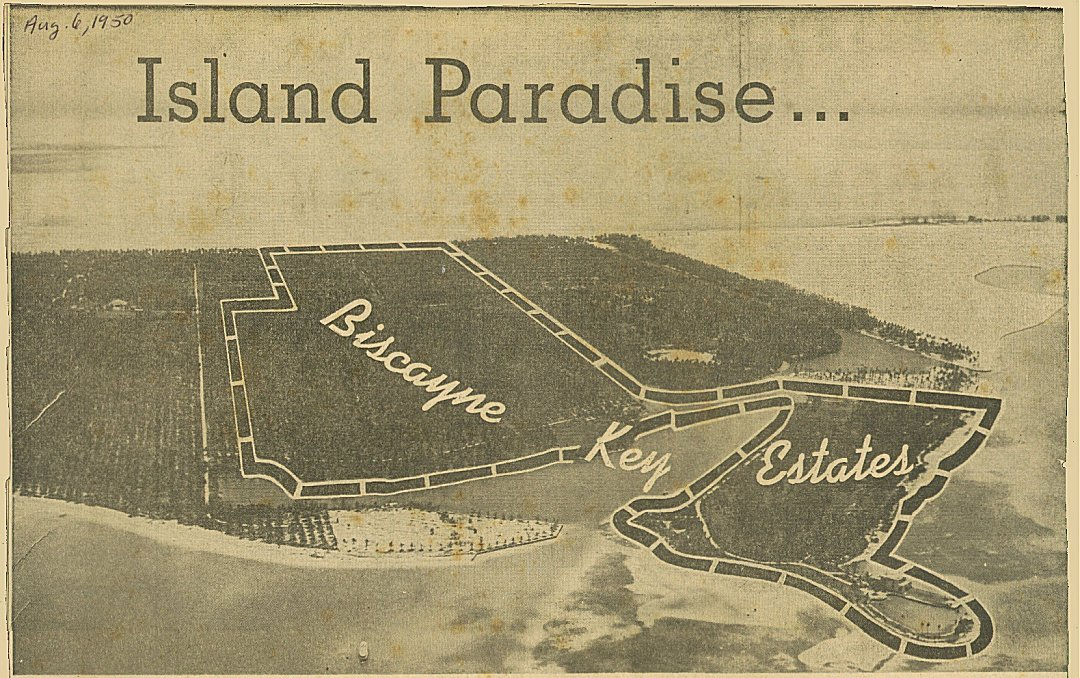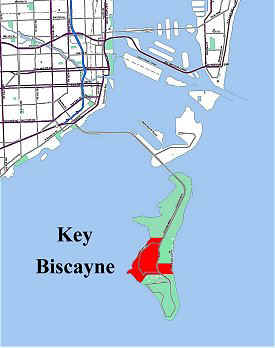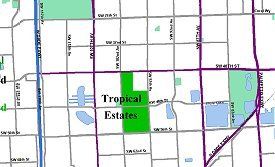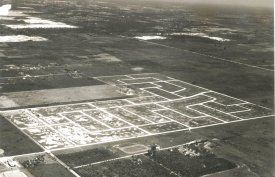KEY BISCAYNE TO WESTWOOD LAKES
KEY BISCAYNE
On August 6, 1950 the Miami Herald ran a multi-paged article headlined:
"Island Paradise...Biscayne Key Estates "
and subtitled:
"Biscayne Key Dream City Rising"
The opening paragraph reads:
"Within a few minutes of the courthouse, a vast new tropical island paradise is blossoming. The veil of secrecy was removed last week from one of the most important new developments in Miami's history."
And the largest project - so far - in the Mackle saga was under way.
Things happened fast in those days. On October 8th - just two months later - the Miami Herald reported,
"In those two months, these things have happened: the first group of 150 homes has been completely sold out....Within a week the builders will be putting the finishing touches on five homes a day. Within 30 days the first "settlers" will be moving into this extraordinary new frontier".
The Mackle Brothers had graduated from builders of subdivisions .....
.........They were now becoming City Builders.
THE KEY BISCAYNE LAND ACQUISITIONS
The first parcel acquired encompassed 220 acres and ran from the ocean to the bay including Mashta island where Deering, who built Vizcaya on the west side of the bay, constructed Mashta House.
Incorporated into the master plan were shopping centers, church sites, a residents beach club, yacht club site, restaurants, a hotel and all of the facilities of a separate city.
The north two thirds of Island had been owned by the Matheson family and the south one third by the Aleman family of Cuba. The Mathesons, had been instrumental in getting the government to fund the bridge to the island. The donation of land for the original Crandon Park, on the north end of the island, was the incentive provided by the Mathesons. The bridge was completed and opened to the public at the turn of the decade.
The Mackles must have been familiar with the island from their boating and fishing experiences in Biscayne Bay.
However, John Shuey - a next door neighbor of Dad's on Sunset Island and a prominent Miami realtor - convinced Dad to see the island and consider its acquisition and development.
Allen Morris - then with the Keyes Company - had a listing on at least one of the parcels. He took the lead in putting together an offering package covering all of the privately owned lands on the island. This included both the Matheson parcels totaling about 800 acres and the 600 acre Aleman property encompassing south end of the island.
Dade County, in 1949, had approved a zoning plan for the island and the Alemans had begun dredging, filling and seawall construction. Some of the Matheson property had plats already drawn.
The Mackle Brother's initial land purchase was for 220 acres for $800,000. The land was purchased from Robert M. Wood a W.J. Matheson heir.
The property included about 1,300 feet of oceanfront which would soon be the site of the Key Biscayne Hotel and a private beach club. 553 residences were planned for the property. Every buyer of a Mackle-Built home on Key Biscayne would have perpetual membership in the private beach club.
The financing for Key Biscayne came from Investors Diversified Services who would also be a venture partner on the Key Biscayne hotel. IDS also was the financing source for at least three other projects during this era, Tropical Estates, Ascot Park and Randall Park.
At the same time the Mackles acquired a seven acre parcel just south of Crandon Park just below the circle which would be developed as a small commercial center.
Less than a year later, on February 25,1951 the Mackles completed their second acquisition. The purchase was for 180 acres north of and contiguous to the first parcel and ran from Crandon Boulevard to the bay.
This parcel would be the site of 350 homes and at least two church sites and the Key Biscayne Yacht Club.
At Key Biscayne the Mackle Brothers donated the church and school sites to responsible groups who were ready to build. This would set a precedent that the Mackles would continue for the next thirty years.
They did have one request of the Catholic Church - that the school and church be named after their mother - Theresa Agnes Mackle. Thus St. Agnes Catholic Church and St. Agnes Catholic School were born.
One additional acquisition was in the works.
A week after the second purchase was closed the Miami Herald reported "Deal Nears Completion for Biscayne Key Tip". A Mackle Brother's offer to purchase of the 600 acre Aleman property had been accepted! The agreement was for $4,500,000 - $7,500 per acre.
The paper reported, "in Havana it was rumored the final closing would take place Saturday evening..."
It was not to be, however. The Alemans reneged on the deal and the Mackles chose not to pursue the matter in court. I understand that one of the real estate agents on the deal did pursue his legal rights to the lost commission and was successful. Years later most of the Aleman property was acquired for - what is now - the public park.
In any event, the Mackles became the first home builders on the Key. Because of that and for the construction of the Key Biscayne Hotel they are regarded as the "founders" of modern Key Biscayne.
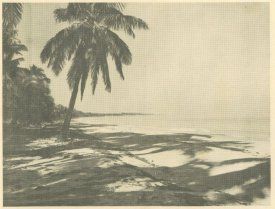
Key Biscayne
1950
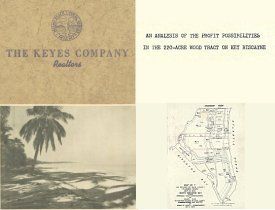
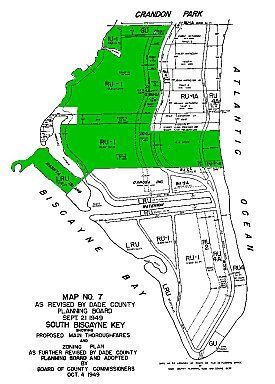
Key Biscayne Properties
First and second acquisitions
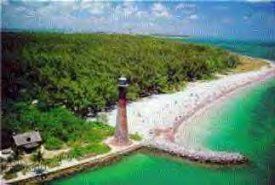
Lighthouse
Key Biscayne
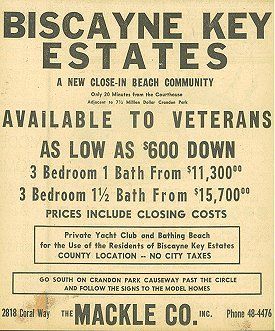
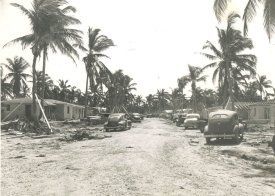
Construction Under Way
Wood Drive, Ridgewood West
November 23, 1950

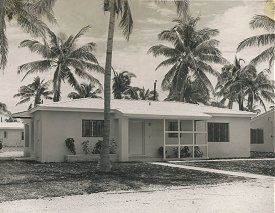
Key Biscayne Model Home
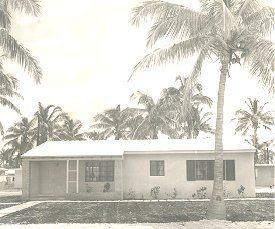
Key Biscayne Model Home
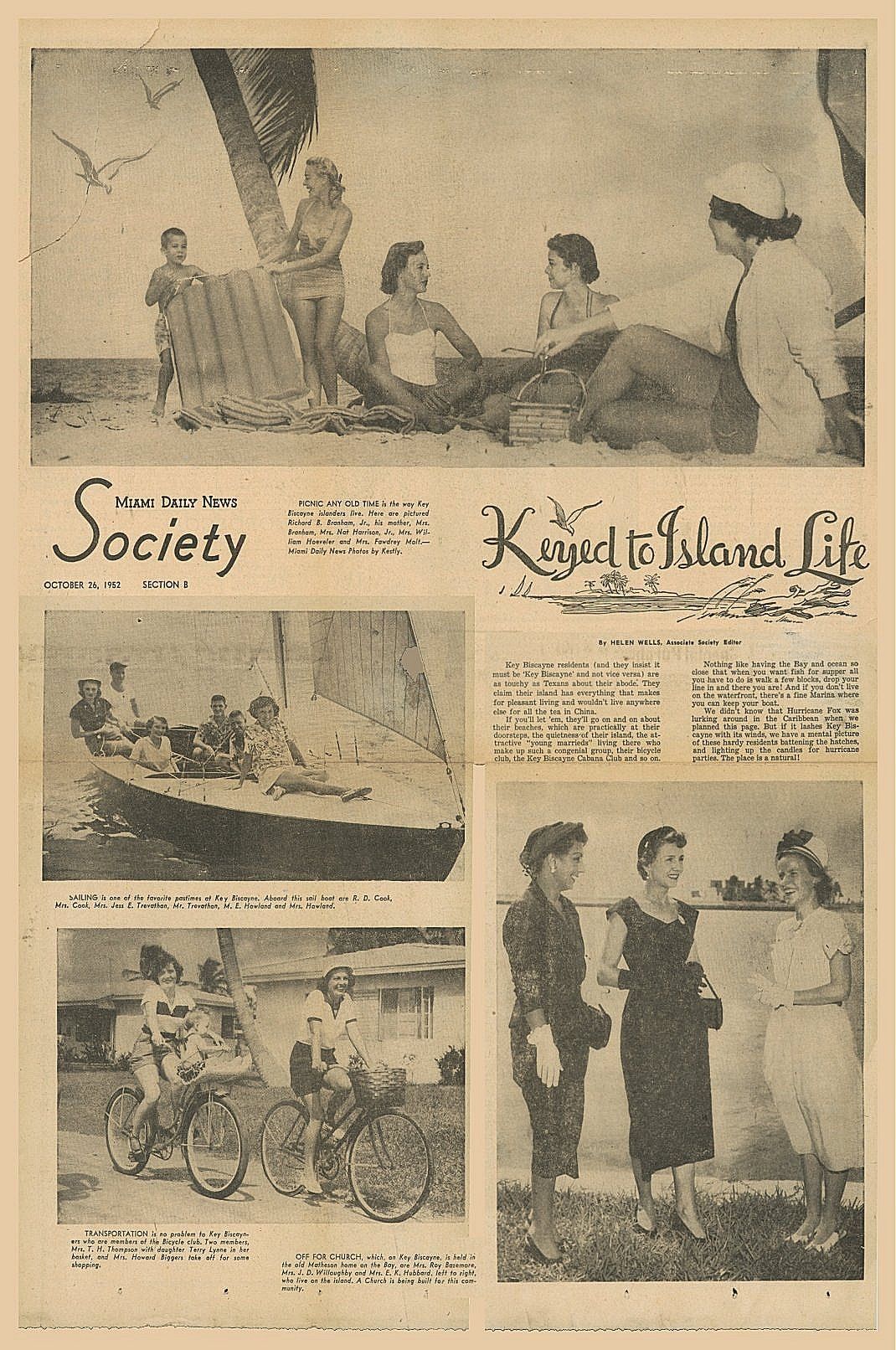
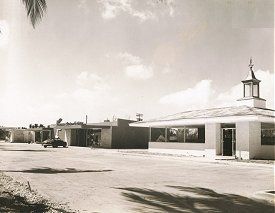
Key Biscayne
Commercial Corner
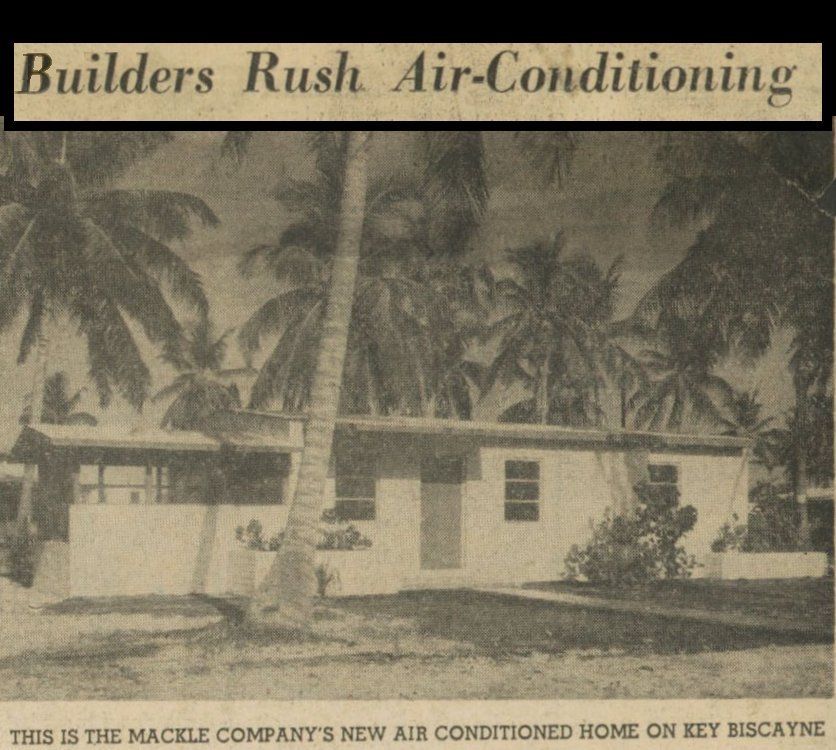
The Key Biscayne project was hugely successful. The Mackles overcame all of the obstacles and transformed the former coconut plantation into an island resort unequaled in South Florida.
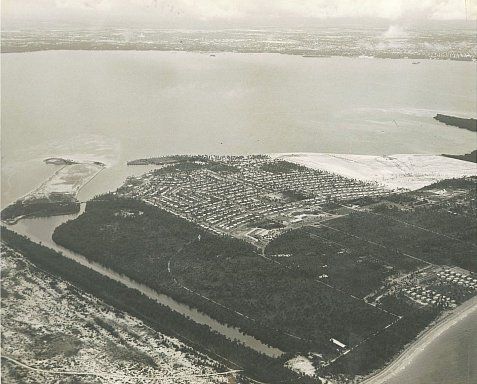
Key Biscayne 1951
THE KEY BISCAYNE HOTEL
Progress was swift in both home sales and the pursuit of new opportunities on the Key.
On October 8th, 1950 - only two months after its opening - The Miami Herald reported that 150 homes had been sold and were nearing completion and the Mackles were now completing five homes a day!
And the Biscayne Key Villas was about to open early in 1951. The first phase - of what was to become The Biscayne Key Hotel - included twenty four villas and a beachfront pool fronting on the Atlantic ocean.
A second group of villas and a par three "pitch and putt" golf course opened in late 1951.
The four story Key Biscayne Hotel - the final phase - opened in early 1953.
The complex was simply designed but quality throughout. Food was outstanding. Service was excellent. A round on the par three oceanfront golf course was unparalleled. The beach was magnificent. The Hotel offered a quieter, more family friendly destination, than hotels on Miami Beach.
It cannot be underestimated the vital role that The Key Biscayne Hotel played in the success of the Mackle Brothers. The Hotel became a favorite hideaway for prominent figures from all over the world.
Richard Nixon and the Nixon entourage were the most famous.
Jack Kennedy - after one of the closest elections in history - chose the Hotel as the spot where he would meet with Nixon to heal the wounds.
During the Nixon administration his staff as well as world leaders meeting with him used the Hotel as their headquarters. By that time Nixon himself had built his own "Little White House" on the bay side of the Key.
The Hotel was annually the headquarters for one of the schools invited to the Orange Bowl. After Dad became involved with Notre Dame in the sixties it was always the Florida home of the Fighting Irish.
Bankers, businessmen, politicians, performers, religious and cultural leaders from all over the world were guests at the Key Biscayne Hotel.
Billy Graham, Arthur Vining Davis, Senator George Smathers were just a few of the names written in the Key Biscayne Hotel guest register.
In the last half of the fifties the Hotel was used in the recruiting of out-of-state sales representatives for General Development and later The Deltona Corporation. The earliest company sales conventions were held at the Hotel.
For years the mention of the Key Biscayne Hotel would elicit fond memories and a connection could be made with almost anyone who had ever traveled to South Florida.
Complementing the Hotel - although operated separately - was the Hurricane Harbor Restaurant. near the circle just south of Crandon Park. Featuring steaks, salad and a resin baked potato the restaurant became a favorite for people all over Miami. Like the Hotel it too served to enhance the name and the reputation of the Mackle Brothers. of modern Key Biscayne.
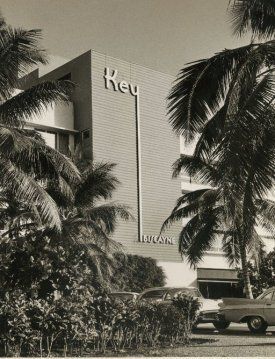
Entrance
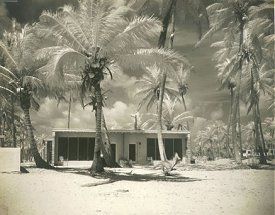
Phase One Oceanfront Villa
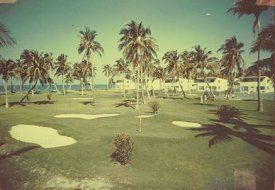
Oceanfront Pitch and Putt
Golf Course
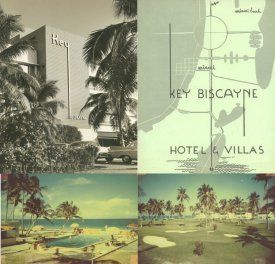
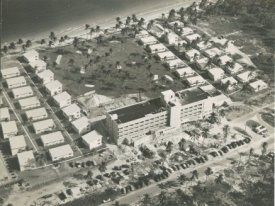
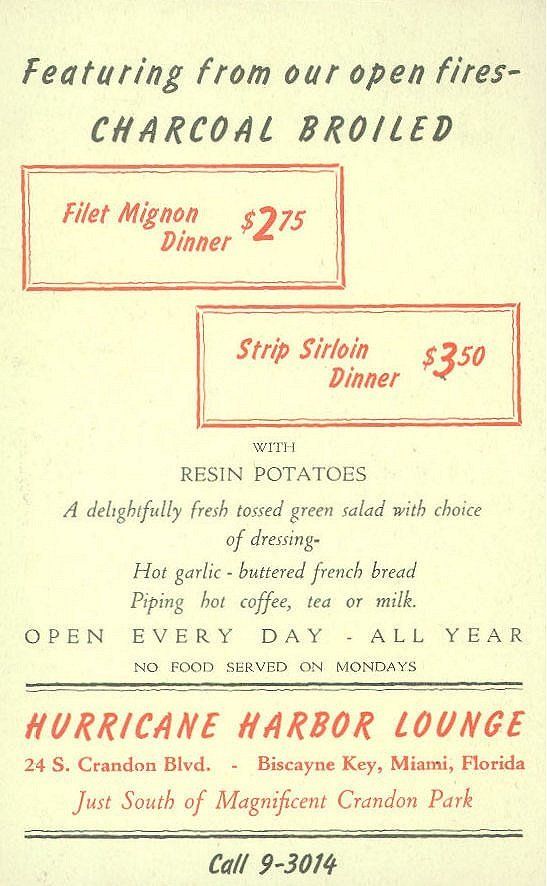
WESTWOOD LAKES AND OTHER PROJECTS OF THE EARLY FIFTIES
While Key Biscayne was the centerpiece of the early 50's, more conventional projects continued to be developed on the mainland.
In February 1950 Ascot Park, a subdivision of 180 homes opened.
In December 1951 Tropical Estates - the largest project to date with 1100 homes - opened for sale.
In September 1952 Randall Park and its 234 homes opened to the public.
But the dreams and ambitions of the Mackle Brothers were still growing.
The post war G.I. housing market was turning into the Florida Boom. The "baby boom", the job opportunities in Florida, the growing dream of northerners to vacation in and retire in the Sunshine State were all in full swing. Where other parts of the country recorded recessions in 1953-54, 1957-58 and again in 1960-61, the Florida real estate business saw little if any negative impact.
The Mackle Brothers were well positioned - as the leading home builder in the State - to take advantage.
And Miami alone would not be big enough.
Post-War Home Construction
The Miami projects completed in the late 40's and through the mid 50's were largely designed to meet the huge post-war demand of returning GI's who were now forming families and settling into peace-time jobs.
In New York State Levitt was known as the leader - building huge subdivisions and perfecting the art of assembly line house construction.
In the South Florida the Mackle Brothers were doing the same thing.
The Post-war projects grew in size from the 1940's subdivisions which started in the 70 home range to the 1,100 home Tropical Estates in 1952 and then the 3,500 Westwood Lakes which opened in 1954. In the same year that Westwood opened the Mackle opened the 4,500 home Pompano Highlands. By the mid 50's the Veteran market of new family formations was being supplemented - and then largely replaced by - the growing Florida retirement market.
In 1956 over 2000 homes were completed and in 1958 over 2,500 were sold and constructed in one year's time.
About 50 homes per week - or approximately 10 homes per weekday - were being sold, built, "final-ed " and closed!
Tropical Estates, in 1952, appears to have been where the Mackles really began to produce houses in high volume. And the techniques perfected there were carried forward and refined in later projects.
The demand for low cost housing in those days demanded some very inventive construction methods.
When I joined the company in the mid 60's some of the key construction supervisors of the 50's were still leading the building activities of the Mackle Brothers. They included Ed Rogers, Bill Gregory and others.
Whether time had inflated the stories or not, they - and Dad - occasionally talked about those times with the pride and confidence of accomplished, experienced builders.
Labor was plentiful. Even the skilled union workers were willing to put in a full day's work for a full day's pay.
Competition was created between crews. Ed Rogers told stories of putting two crews on the sheathing of a house. 1 x 6 planks were used in the early days before plywood became more widely used. The two crews would race to the peak of the roof simply for the honor of being the "best".
Apparently there was great competition for being featured on the front page of the Sunday Real Estate section. On one occasion that opportunity became available only a little over a week in advance.
A new model was put up in seven days!
House designs were simplified to the extreme.
Having the lowest cost home on the market was more critical than ever in those days. Dad talked about laying out the block on a home so that a house could be built without breaking a block. House dimensions and window locations were made such that they would conform to multiples of the standard 16" concrete block and the 8" half-block.
Bathrooms were laid out back-to-back with kitchens to minimize the length of drain pipe required.
We talk about how the price of homes have increased over the years. But it is interesting to note how federal and local building requirements have added to those costs. In the post-war period - even FHA and VA standards allowed kitchen cabinets to be installed without doors and only the master bedroom was required to have locking hardware. Closet doors were not required.
GI's returning from campaigns in Europe and the islands of the Pacific didn't need such luxuries!
In 1952 at Tropical Estates a house could be bought for as little as $4,950 with monthly payments of $29.44. Ads proclaimed that a Veteran making as little as $35 per week could buy a home!
To reduce costs to the minimum, designs - by today's standards or even compared to pre-war designs - were simple. Floor plans were rectangular. Models lines started at one bedroom, one bath with and a total area under roof of about 600 square feet. The one bedroom model was so popular it became known internally as "The Little Gem."
Lots were a "spacious" 75' x 125' - the VA and FHA minimum.
But the simplicity of design did not detract from the structural quality which was probably better than we see today - as was best demonstrated in Hurricane Andrew.
Designs included monolithic slabs which incorporated foundations in a single concrete slab pour or a footing and a floating slab which allowed for block masons to run block strait from the foundation to the tie beam.
Designs also featured struck block walls (ie. controlled block joints instead of stucco) on the exterior, flat or low pitched roofs made weather tight with tar and gravel, asphalt tile flooring (terrazzo floors were offered as an upgrade), casement windows and the relatively new rock lath and two coat plaster jobs for the interior walls. Ceilings were not plastered as the roof sheathing and rafters sufficed. Widow air condition units were available as an extra. Central air conditioning was not introduced until 1952. Landscaping consisted of sprigged - not sodded - lawns. You could add bushes and trees later!
In those days the house layout personnel, the concrete workers, the block masons, the rough carpentry crews, the trim crews and the common laborers were all company employees. Even the roof framing was done in-house until pre-fabricated trusses came on the scene.
Only electric, plumbing, plastering, paint and air conditioning (when it came in to vogue) were subcontracted.
Managing that many "in house" building tradesmen took motivated workers and tough-as-nails supervisors.
To reduce costs and operate more efficiently central mills were set up to pre-cut studs and rafters which were then delivered to the jobsite in a packages.
The Mackles set up their own concrete batch plant to keep up with production.
And the Mackle Brothers - in the late 40's and throughout the 50's - began to do more and more of the professional work "in house" as well. By the mid 50's all engineering, architecture and utility operations were done by employees of The Mackle Company.
The volume of house sales allowed for crews and sub-contractors to move from one lot to the next with little or no lost motion.
Lot preparation was done a block at a time. Layouts for houses were done with a wooden template. The labor crew dug the foundation. Carpenter crews formed the slab and laid the wire mesh. Concrete crews poured and finished the slab. Block masons erected the walls. And on it went.
A crew - finished with one house - simply moved next door to do it all over again.
And home construction was continuous for as far as the eye could see.
In spite of their simplicity of their homes and the "assembly line" nature of their construction process, the Mackles earned a reputation for quality and value. Even today - especially at Key Biscayne but also at other subdivisions of that era - the knowledge that a house is Mackle-Built is a matter of pride and "blue ribbon" accolade heard from to owners and Realtors alike.
Some of the construction superintendent "legends" of that time included Ed Rogers and Bill Gregory mentioned above as well as Bill Farmer and Johnny Fellows. Dad, Bill O'Dowd and others who knew them held them in the highest esteem. And their approaches to building construction were held out as models to those of us who carried on their work in later years.
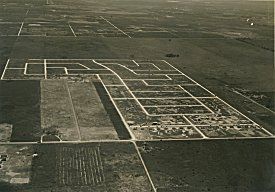
Tropical Estates
February 29, 1952
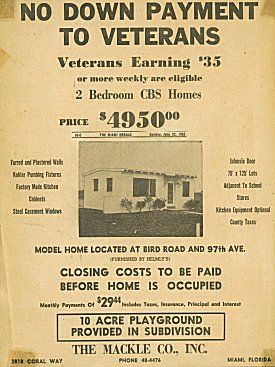
1952 Advertisement
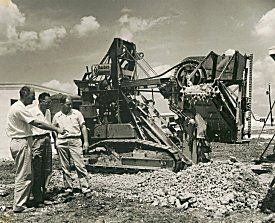
Bill Gregory and Bill Farmer
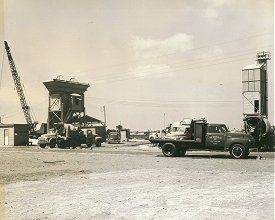
Concrete Batch Plant
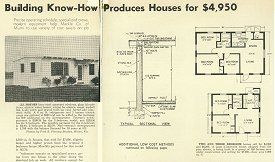

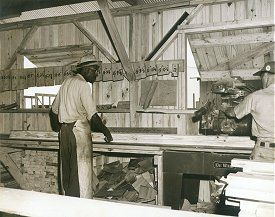
Pre-cut Shop
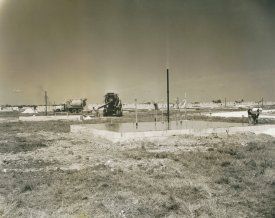
The Assembly Line
Slabs Being Poured
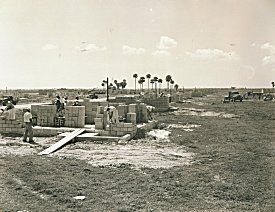
The Assembly Line
Block Going Up
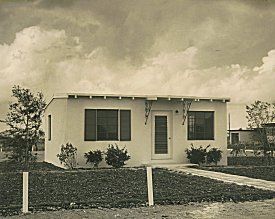
Tropical Estates Model
"The Little Gem"

A Two Bedroom Model
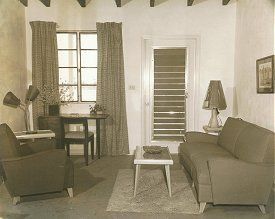
Model Living Room
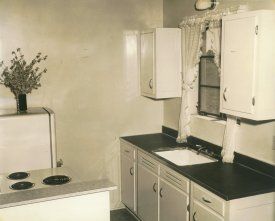
Model Kitchen
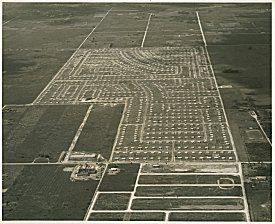
Tropical Estates
August 11, 1953
There would be one more project in Miami - Westwood Lake - planned for 3500 homes - which opened at the end of 1954.
Now the economy, the expanding demand for low cost housing, the second Florida boom of the century, the Mackles growing success and reputation, their effective organization and Dad's ambition all combined to set the stage for the greater opportunities.
The financing for Westwood Lake came from Dad's LaGorce Country Club connection - Buck Buchanan.
Buchanan was President of Florida Canada Corporation. But the Westwood project was financed through private Buchanan sources.
At the same time he and the Mackle Brothers were in discussion on a deal with Florida Canada regarding four other projects - projects that would be the foundation for General Development.
Westwood Lakes was the last project opened that was not a part of the Florida Canada ventures.
In addition to the huge home building opportunity the Mackles - for the first time - entered the utility business with the construction and operation of Westwood Lakes Utilities, Inc. and a franchise to service the project from Dade County.
Westwood Lakes - by far their largest project in Miami - opened on December 5th 1954.
An article in the Miami Daily News - the day after - headlined
"48,000 see new homes opened by Mackle Co."
.....and quoted Elliott Mackle:
"Up until 9 o'clock last night our actual sales came to 389 homes. It was the biggest day in the 44-year history of our company"
Not bad.....
..... but a new - even bigger - opportunity was knocking!
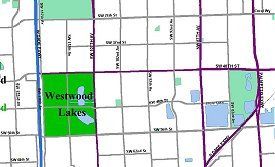
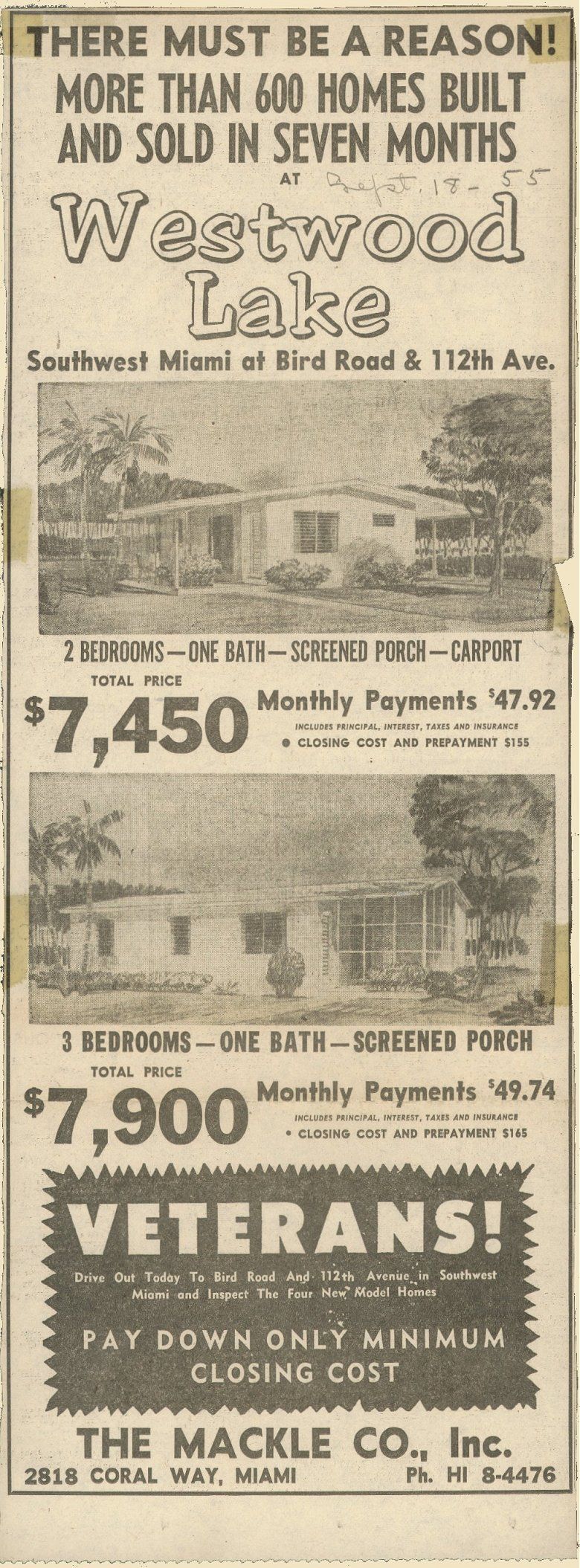
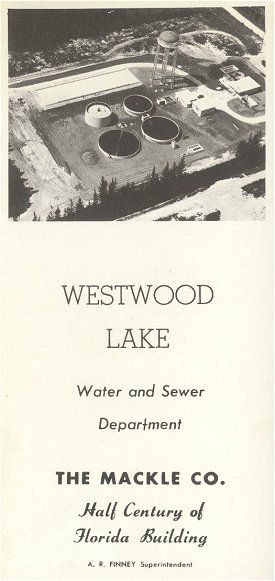
The Mackles First
Utility Company
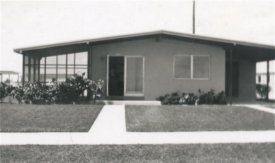
Westwood Model
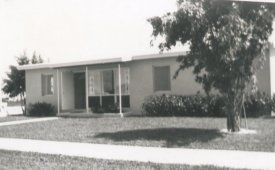
Westwood Model
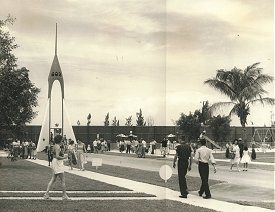
Westwood Lakes
Home Show
1957
